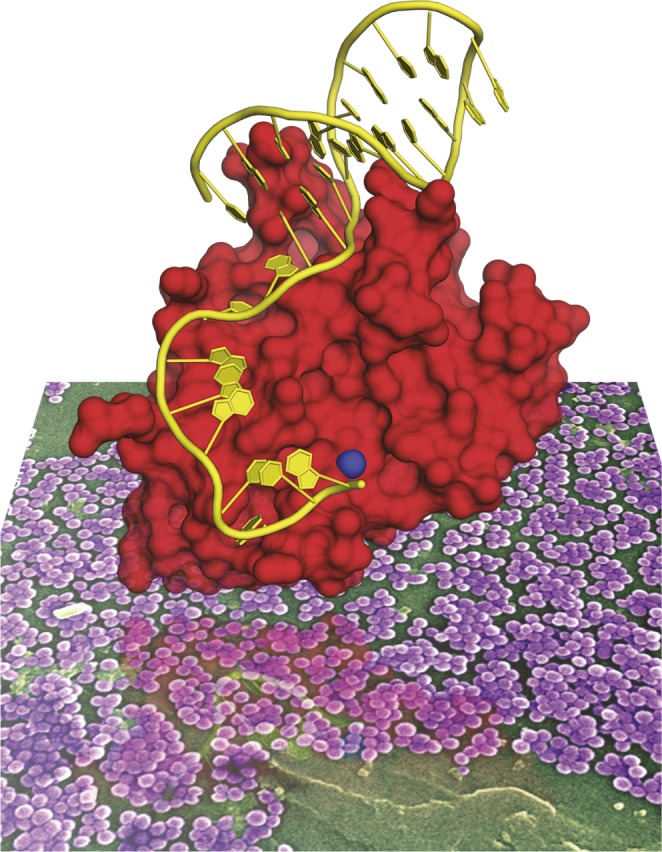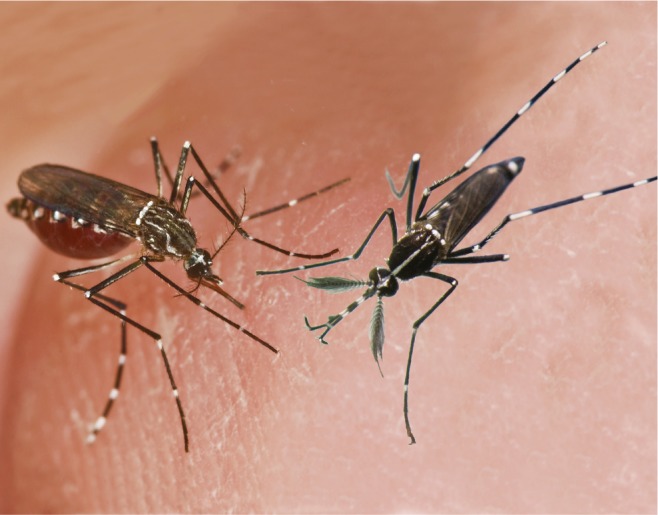Brain functional connectivity in autism
Oscillations in distinct frequency bands connect distant brain regions and coordinate cognitive processes. In autism spectrum disorders (ASD) long-range functional connectivity in the brain is often reduced, but the status of local functional connectivity remains unclear partly due to the technical challenges of isolating and assessing local cortical processes. Sheraz Khan et al. (pp. 3107–3112) used a technique called magnetoencephalography to measure long-range and local functional connectivity in 17 adolescent and young adult males diagnosed with ASD and 20 age-matched typically developing males, while the individuals viewed neutral and emotional faces, a task known to be related to the core social deficits of ASD. As in previous studies, the authors found that the ASD group exhibited reductions in long-range connectivity; however, local connectivity was also reduced in the ASD individuals, the authors report, contrary to a prevailing hypothesis. According to the authors, the strength of long-range and local functional connectivity was directly correlated in both groups, suggesting that long-range and local connectivity are proportionally reduced in ASD individuals. In addition, the magnitude of local connectivity correlated with ASD severity and local and long-range connectivity data identified ASD diagnosis with 90% accuracy. The findings suggest that abnormalities in functional connectivity both within and across cortical regions may characterize ASD, according to the authors. — T.J.
DNA vaccine protects monkeys against SIV
Despite being safe, stable, and potentially powerful, DNA vaccines have largely failed to confer the same level of immune protection in humans as in other animals. But recent improvements in delivery and adjuvants have led to an enhancement of the immune response and a renewal of interest in DNA vaccination. Vainav Patel et al. (pp. 2975–2980) tested a DNA vaccine produced against one strain of simian immunodeficiency virus (SIV) for its ability to protect against infection with a heterologous strain in Rhesus macaques. The authors used a technique called electroporation to vaccinate monkeys with DNA encoding SIV antigens, and included the immune molecule cytokine IL-12 as an adjuvant. Two groups of monkeys received inactivated SIV viral particles in addition to DNA. The monkeys were challenged with live virus 26 weeks after the final vaccination and weekly thereafter. Compared with controls, vaccinated monkeys, particularly those with rectal antibodies to SIV, took longer to become infected, with two monkeys in one of the DNA + particle groups displaying sterile protection. Vaccinated monkeys had a significantly reduced viral load during the chronic phase of infection, and none showed any sign of disease during 40 weeks of follow-up. According to the authors, the findings support a role for DNA- and protein-based vaccines in combating HIV/AIDS. — C.B.
Superbug’s secret to spreading antibiotic resistance

Spread of antibiotic resistance in Staphylococcus. Background image courtesy of Janice Haney Carr and Jeff Hageman, MHS (CDC). Main image courtesy of Lars Sahl (University of North Carolina, Chapel Hill, NC).
Staphylococcus aureus infections have become increasingly difficult to treat as strains emerge that are resistant to antibiotics such as methicillin and vancomycin. Jonathan Edwards et al. (pp. 2804–2809) target a bacterial enzyme known as nicking enzyme in Staphylococcus (NES) and reveal its role in the spread of drug resistance. Researchers have established that resistance can be transferred between cells on plasmids—small circular strands of bacterial DNA that are separate from the bacterial chromosome—and that the process depends on NES. The authors unveiled crystal structures of the two major regions of the enzyme’s amino acid chain, known as the N- and C-terminal domains, in addition to a structure showing the entire enzyme bound to bacterial DNA. Further analysis revealed that the enzyme’s N- and C-terminal domains combine to initiate and terminate the plasmid’s transfer into nonresistant cells. Using the crystal structures as a guide, the authors designed a synthetic polymer that targets the minor groove of bacterial DNA to inhibit NES. According to the authors, the synthetic polymer could help guide future research aimed at developing effective treatments for strains of drug-resistant S. aureus. — A.G.
Battle tactics in a mosquito turf war

Satyrized (Left) and satyr (Right) mosquito species. Image courtesy of Jim Newman (staff photographer, Florida Medical Entomology Laboratory, University of Florida, Vero Beach, FL).
The Asian tiger mosquito Aedes albopictus arrived in Texas in the 1980s and rapidly spread throughout the southeastern United States, forcing the yellow fever mosquito, Aedes aegypti, out of its niche. Irka Bargielowski et al. (pp. 2888–2892) explored the tactics used by A. albopictus to supplant A. aegypti. Previous reports pinned the displacement on competition between the disease vectors for larval resources, but the authors hypothesize that a more powerful mechanism might be at play. Citing recent evidence that male A. albopictus transfer proteins that sterilize female A. aegypti when the species crossbreed in nature, the authors suggest a role for satyrization, a form of reproductive interference that competitively favors A. albopictus. In regions where the species coexist and interspecies mating occurs, the authors find that A. aegypti females avoid mating with male A. albopictus and have evolved resistance to satyrization, while mosquitoes unfamiliar with interspecies mating remain susceptible. According to the authors, the findings suggest a role for courtship and female choice in the A. aegypti mating system, contrary to a long-held notion that the first male to seize a female will successfully mate with her. The results could help predict changes in the distribution and abundance of vector populations, allowing epidemiologists to assess the risks of disease transmission, the authors suggest. — A.G.
Chimpanzee tooth development and life history

Infant chimpanzee nursing 8 months after the emergence of her first molars.
Understanding tooth development may provide clues to the evolution of human life history, as the pace of the first molar’s emergence tracks the schedule of growth and reproduction among primates. However, little is known about tooth development in living wild chimpanzees, and how dental development relates to nursing behavior, solid food consumption, and maternal reproductive state remains unclear. Tanya Smith et al. (pp. 2787–2791) studied wild chimpanzees in Kanyawara, Kibale National Park, Uganda, and used photographic images to assess first molar emergence in five infants. The authors recorded nursing and feeding behaviors of the infants, and the reproductive state of their mothers. The authors report that the infants’ first molars emerged by the time they were 3.3 years old, although the emergence of the first molars did not correlate with weaning events such as the introduction of solid foods, the termination of suckling, or the resumption of the mother’s estrous cycle. First molar eruption appeared to track the transition to adult feeding behavior. The authors suggest that first molar eruption does not correlate with weaning age, hence caution is warranted when inferring life history traits from tooth development in juvenile hominin fossils. — N.Z.
Injectable drug depots for prolonged peptide release
Peptide drugs are used to treat a variety of diseases, but the drugs tend to be rapidly cleared from the body, necessitating frequent injections and potentially leading to undesirable side effects. Miriam Amiram et al. (pp. 2792–2797) developed a peptide delivery system, named Protease Operated Depots (PODs), which provides protease-mediated sustained release of a peptide drug from a subcutaneous depot. The PODs are genetically encoded, thus avoiding the drawbacks of synthetic prolonged release systems, which can be difficult to produce and use. The authors created a model POD consisting of a fusion between oligomers of a type-2 diabetes drug with embedded protease cleavage sites and a temperature-sensitive polypeptide that is soluble at room temperature but viscous at body temperature. The POD forms a viscous gel depot when injected subcutaneously, and protease cleavage releases the peptide drug over time. The authors report that a single injection of the POD reduced blood glucose levels in mice for up to 5 days, whereas the native peptide drug lowered glucose levels for one hour following injection. Genetically encoded PODs could be used for sustained delivery of peptide drugs, and could be optimized for clinical use by modifying the polypeptide length and protease cleavage sites to control the duration and rate of peptide release, the authors suggest. — S.R.


